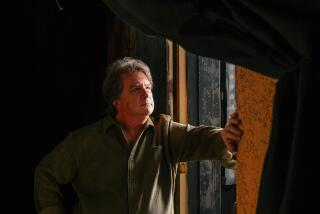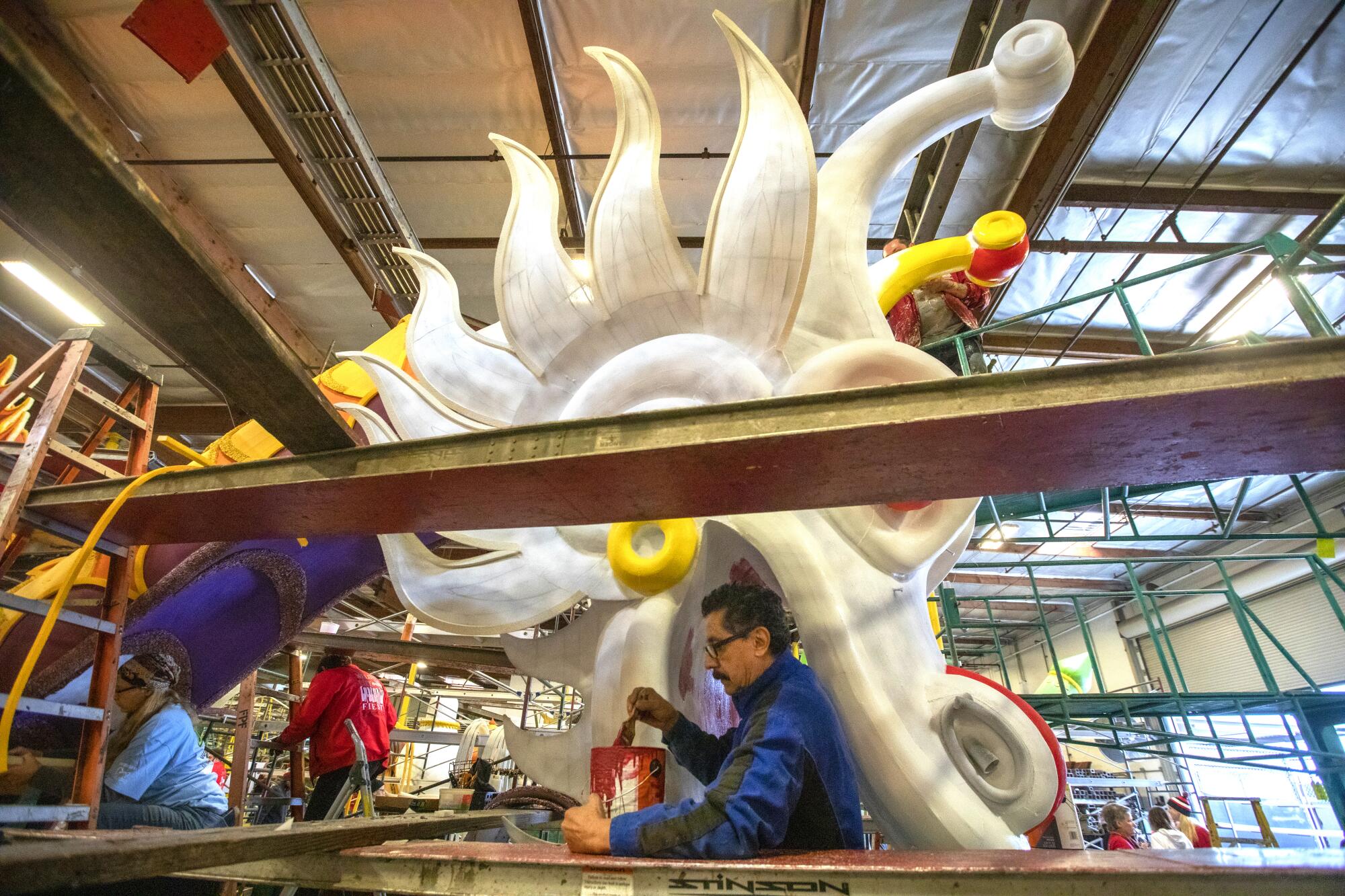
Antonio de Jesus Lopez made his way across the Fiesta Parade Floats warehouse in Irwindale, pushing a red dolly with two large signs from his first Rose Parade float in 2020.
The warehouse around him was filled with the whir of buzz saws and the flashing sparks of welding tools as his coworkers dismantled floats from past years of the iconic Rose Parade.
In his early days at the company, de Jesus Lopez said, he was excited to come to work and improve his art skills alongside designers, decorators, engineers and welders, many of them Latinos and Latinas. The camaraderie, he said, made it an enjoyable work environment.
“It almost felt like you were working with your uncle or your grandma,” de Jesus Lopez said. Now, he said, “it just seems bleak.”
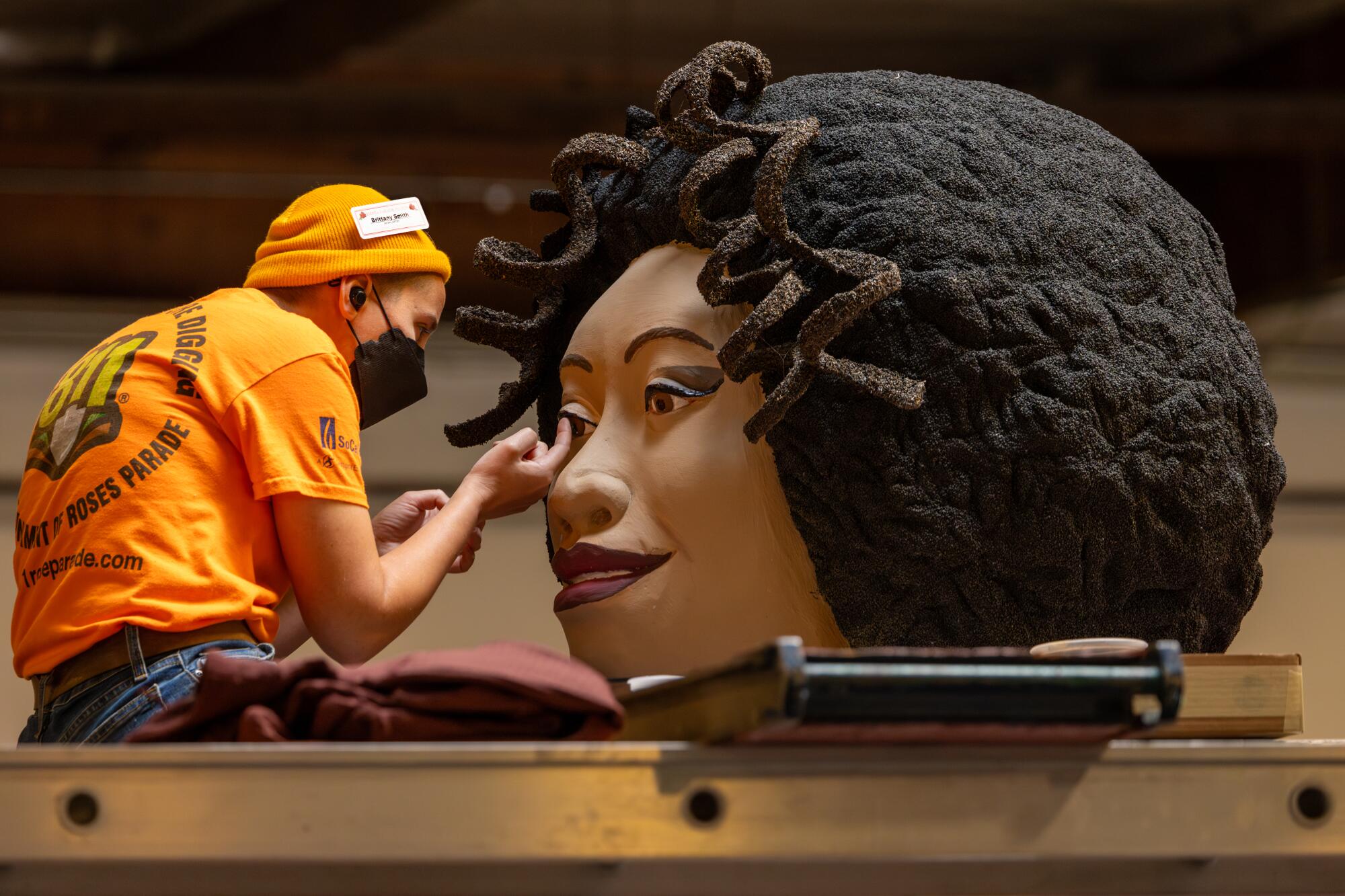
It’s been a difficult two weeks for the 18 employees at Fiesta Parade Floats, one of the premier float builders for the Tournament of Roses Parade. After nearly 40 years, Fiesta is shutting down after the Pasadena Tournament of Roses Assn. cut ties with the company, saying the firm no longer met the established criteria for float builders.
David Eads, the chief executive officer of the Pasadena Tournament of Roses, said in a phone interview that the criteria included maintaining financial responsibility, insurance coverage, floral suppliers, a physical location and experienced workers to build and operate the floats. He declined to say which criteria Fiesta Parade Floats failed to meet.
The ban, Eads said, was “not a decision that the association arrived at quickly or easily.” He said it was the first time in recent years that a float builder could not take part in the tournament.
Eads said the Rose Parade is grateful to the company for its “decades of service” and its award-winning work, which included a float recognized by the Guinness World Record in 2017 for heaviest and longest single chassis parade float.
Tim Estes, owner of the Fiesta Parade Floats, said the association’s decision was a gut punch.
“I feel horrible,” Estes, 68, said. “I feel horrible for my workers. I feel bad for my clients who depended on us to build nice floats... I feel like I’ve let them all down.”
Estes said his company had been struggling financially since the COVID-19 pandemic, when he was forced to temporarily shut down, costing him about $3.2 million. He said 85% of the company’s revenue came from the floats it builds for the Rose Parade.
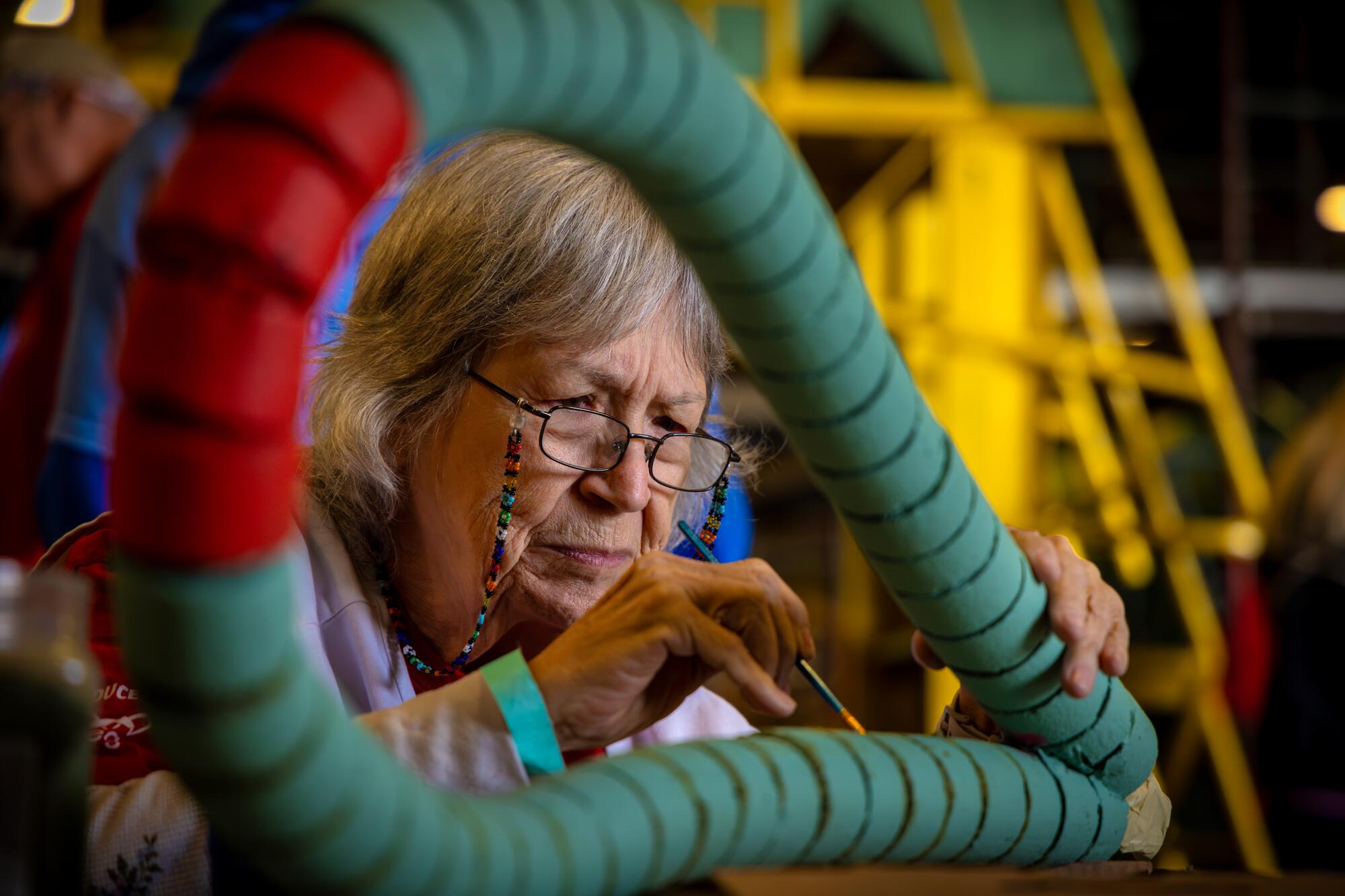
He said the financial hit also happened when he suffered a motorcycle accident that resulted in a fractured skull, seven broken ribs and multiple surgeries. He said he was hospitalized for nine weeks.
Estes said he started to fall into debt by falling behind on rent and utilities at the warehouse that he leased from the Tournament of Roses Assn., which has two warehouses in Irwindale and another in Azusa.
Things improved slightly when the Rose Parade returned in 2022. But by then, Estes said, he had lost nearly half his workforce to retirement, moves to other states, and other jobs.
Estes said the number of floats the company was building dropped by half, from about a dozen. Then inflation hit. Soon, a plywood sheet that once would have cost $16 increased to $66, he said. The cost of everything — from flowers to labor — rose.
Estes said he always made sure his workers were paid first. He said he was making progress on paying down the debt from unpaid rent and utilities when he received a letter from the association that his firm was no longer in good standing and could not build floats for the Rose Parade.
Estes said his company had been working on floats for three clients, including one for the city of Torrance and another for One Legacy, a Southern California nonprofit that helps recover kidneys, livers and other organs from deceased donors for transplants.
Eads said for the past eight years, Fiesta Parade Floats was among three companies authorized to build floats for the Rose Parade. At one point in the association’s history there were up to 10 builders, Eads said, but that was when floats were a lot smaller.
Eads is confident that the last two float builders will be able to take on the added workload and doesn’t expect the loss of a float builder to have an effect on future parades.
For the record:
6:16 p.m. July 15, 2024A previous version of this article referred to Jin Chun as a spokesman for the city of Torrance. Chun is a woman.
Jin Chun, a spokesperson for the city of Torrance, said it was unfortunate that Fiesta Parade Floats was closing. She said the association was connecting the city and others with other float builders.
“We look forward to another successful and award-winning float for the 2025 Pasadena Tournament of Roses Parade,” Chun said.
Estes said he was still grappling with the closure of his company, which he founded in 1988. Building Rose Parade floats had been a childhood dream, he said. When he was 8, he helped decorate his first float, he said, and played around the floats with a friend.
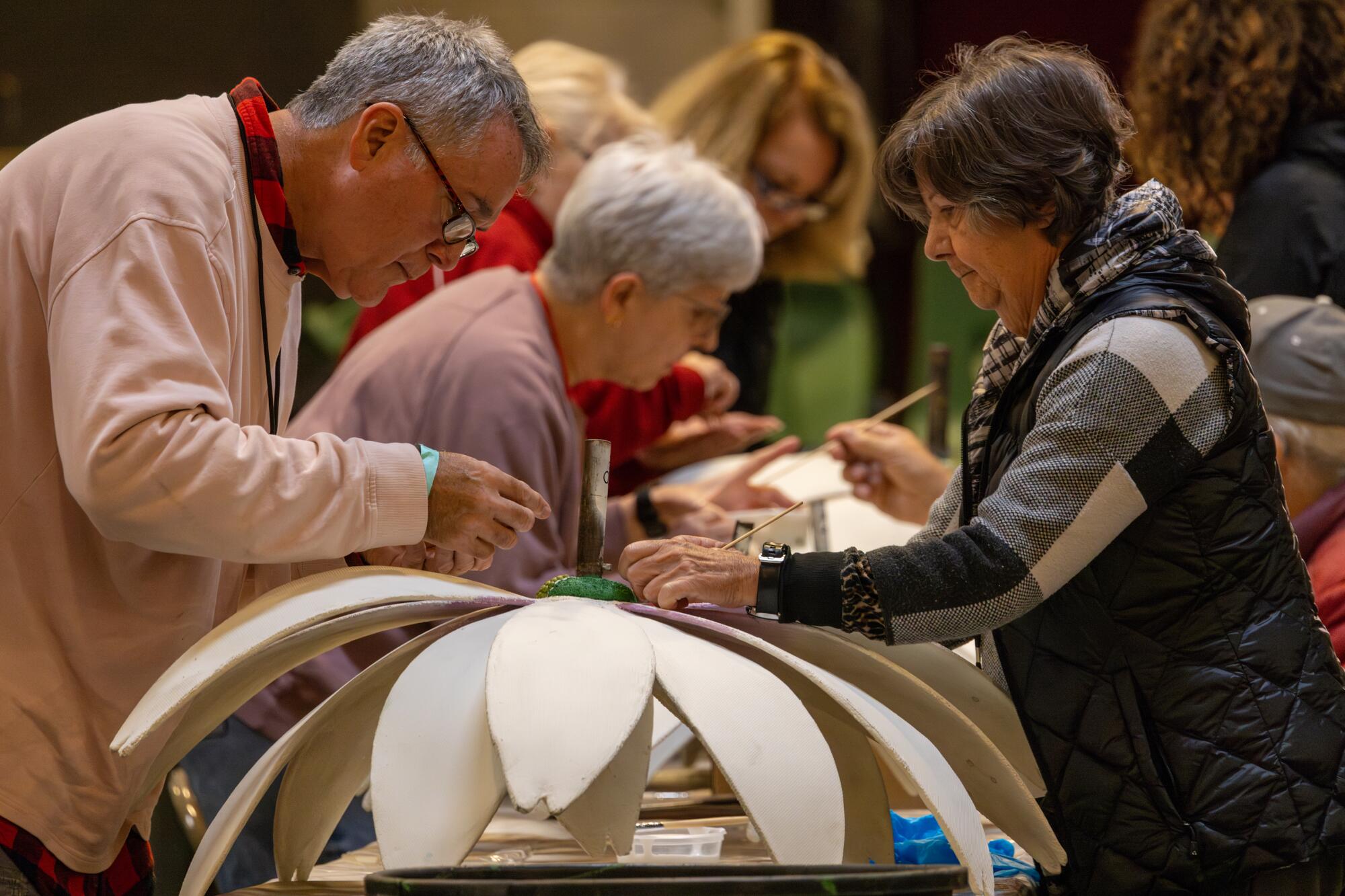
“I’ve always enjoyed crawling through them as a kid,” he said. “I was fascinated by how they were built.”
He said although he struggled financially in the end, he took immense pride in his workers, a “great crew,” he said, who contributed to the company’s long success. The full-time staff at the warehouse now numbers around 18. Several have been with the company for more than 20 years.
He said that in the past three years, 17 of the company’s 18 floats won awards.
Estes said he informed workers about the association’s decision June 21.
“God, it was murder,” he said. “To stand there and tell them what’s going on and that they’re going to be out of work soon… it’s a horrible f--ing feeling.”
Since then, Estes said he has been unable to sleep. He worries about the workers’ well-being and how he’ll manage to clear an entire float-building warehouse.
He said he’s had to move three times before and each move ended up costing hundreds of thousands of dollars and it took about three and a half months. He said he has two weeks left to vacate the building.
He’s not the only one to lack sleep.
Maricela Arámbula, 61, said she doesn’t get much rest at night since she learned the company was shutting down and she would be without a job.
“As you get older, you know, it’s harder to find work,” she said.
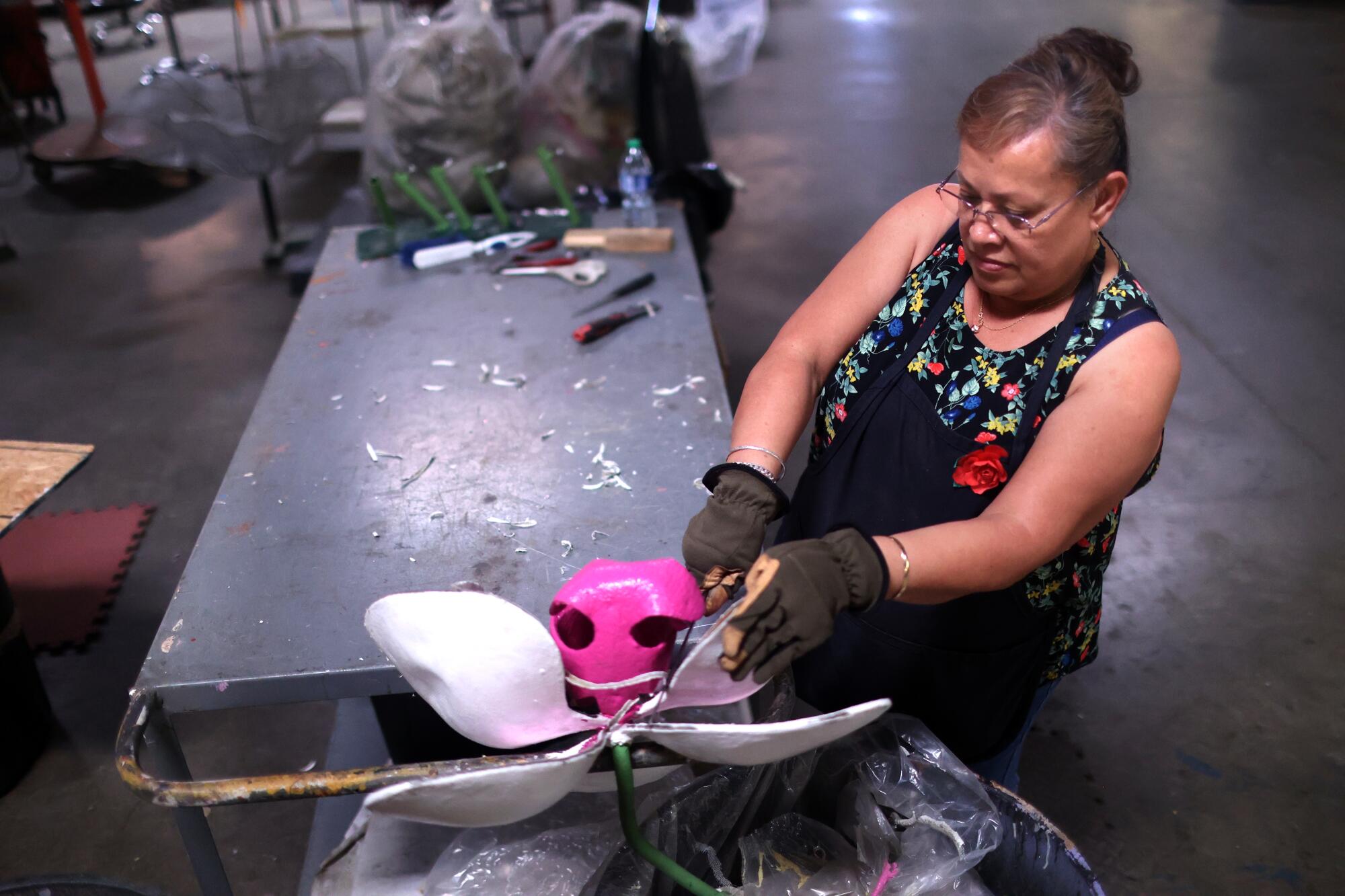
On a recent Thursday afternoon, she was cutting off the mesh screens on a flower sculpture, tossing it into a plastic bag and placing the sculpture in a pile for the next company to use.
Arámbula said she’s been with the company for as long as it has existed.
“My son was two when I started working,” she said, smiling. “Now he’s 40.”
Arámbula said she began working in the float building business in 1986, five years after arriving in the U.S. from Mexico, where she made a living creating paper flowers.
She said that skill helped her get a job with the company, learning to put screen mesh on metal sculptures that would later be decorated with flowers, petals, spices and seeds. She said her time at the company has allowed her to learn other skills.
“I love this job so much,” she said. “I don’t think I would have worked this long if I didn’t.”
She said working at the company not only helped her raise her son and daughter but it also helped her support her parents back home in Mexico.
When they visited some years back she took them to watch the Rose Parade. It was raining hard but her parents were enjoying the parade too much to care. She said she remembered pointing out to her mom which floats she helped create.
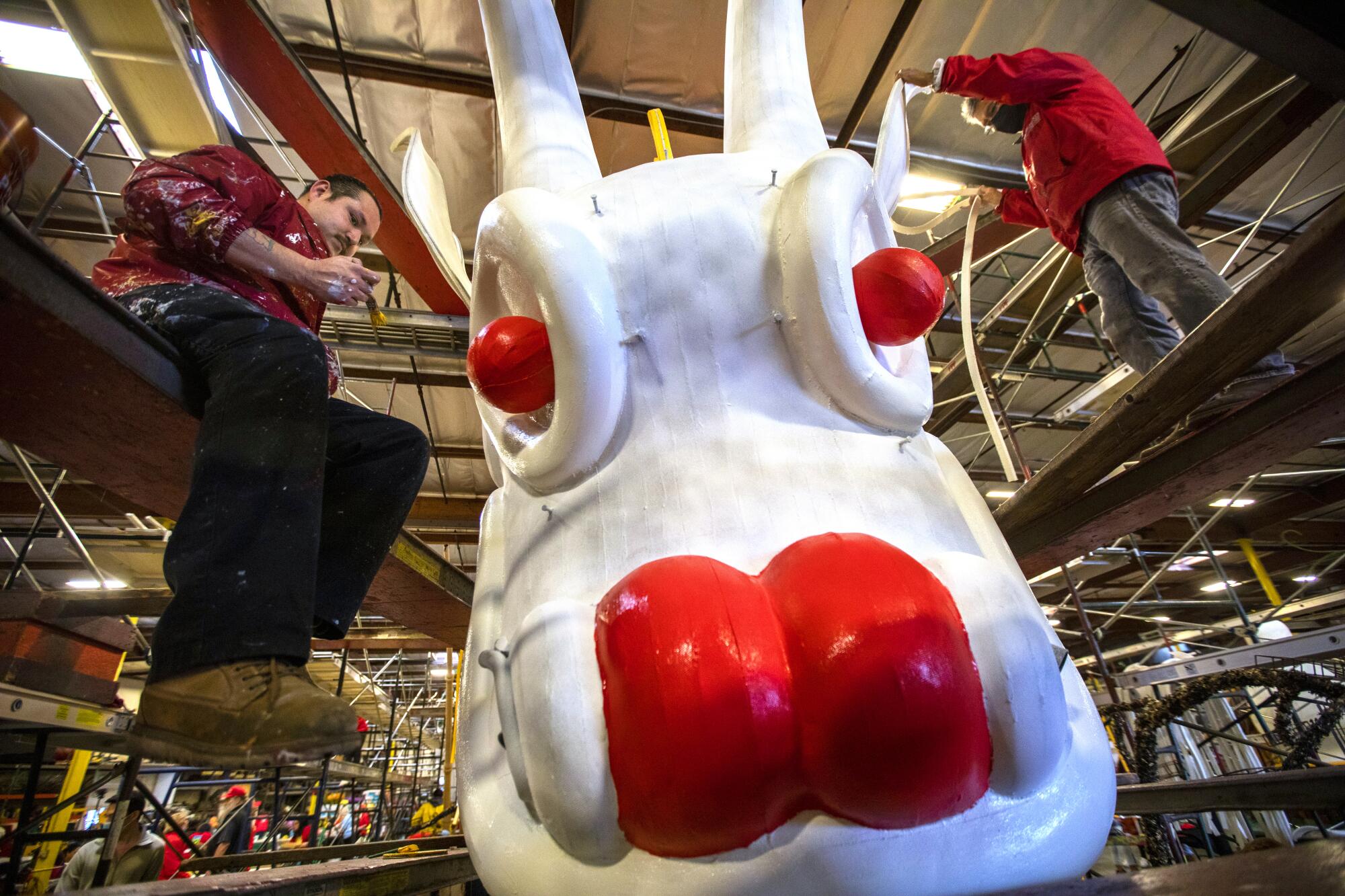
“I’d say: ‘Look, mom, I worked on those flowers on that float,’” she said, recalling. “And my mom would say: ‘Oh, that looks so good darling.’”
She paused to raise her glasses and wipe her tears.
“It’s all over now,” she said. “It’s sad.”
Nearby, using a metal cutter to turn a bird sculpture into scrap metal, Marcus Pollitz, 60, said it’s been devastating to destroy artwork that so many workers like himself had a hand in.
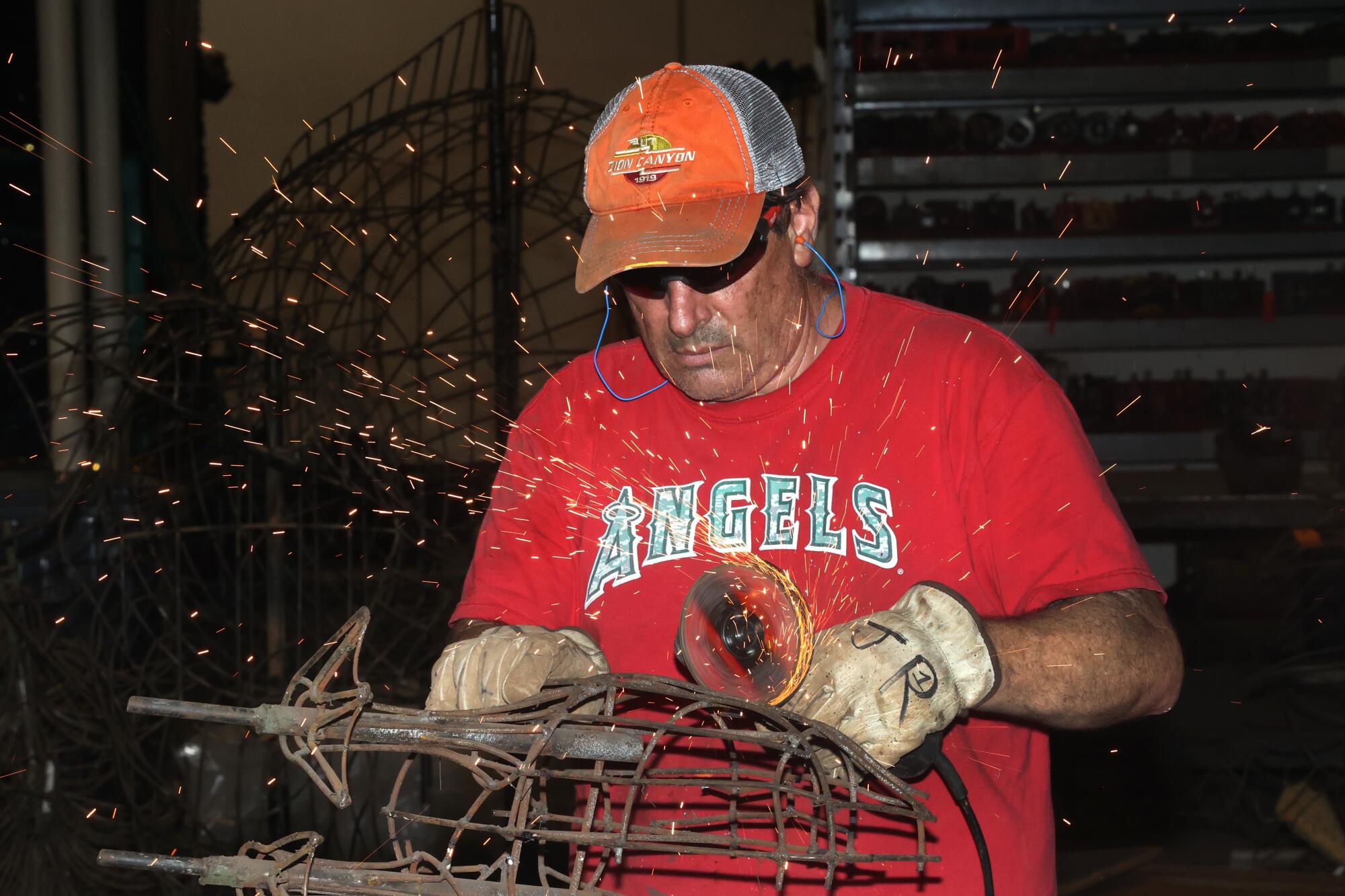
“We always cut things up at the end of the year and put the best stuff on the side, but now, we’re not going to see it again, it’s very sad,” he said. “Everything you see here was sculpted by a welder, painted and adorn in order for it to look like the concept.”
Pollitz said he felt a sense of emptiness when he heard Estes tell the staff that the company was closing.
“There was no miracle that was going to come out of it,” Pollitz said. “There wasn’t somebody that was going to be right behind us that will pick us up and take us on to the next step. Instead, we have to prepare to close down.”
On Thursday afternoon, the sound of buzz saws, the engine of a forklift and metals falling on the ground reverberated throughout the warehouse. Workers yelled out as they heard a Vicente Fernandez song come on the speakers that were attached to the ceiling.
Welding sparks shot out as workers took apart old floats and some swept the floor.
It was nearing closing time when Estes made it out of his office and walked around the 80,000-square-foot warehouse, stopping to talk to workers and occasionally to light up his cigar.
“I wanted to do this for another four or five years, not retire,” he said. “But now, I don’t seem to have a choice in the matter.”
More to Read
Sign up for Essential California
The most important California stories and recommendations in your inbox every morning.
You may occasionally receive promotional content from the Los Angeles Times.


